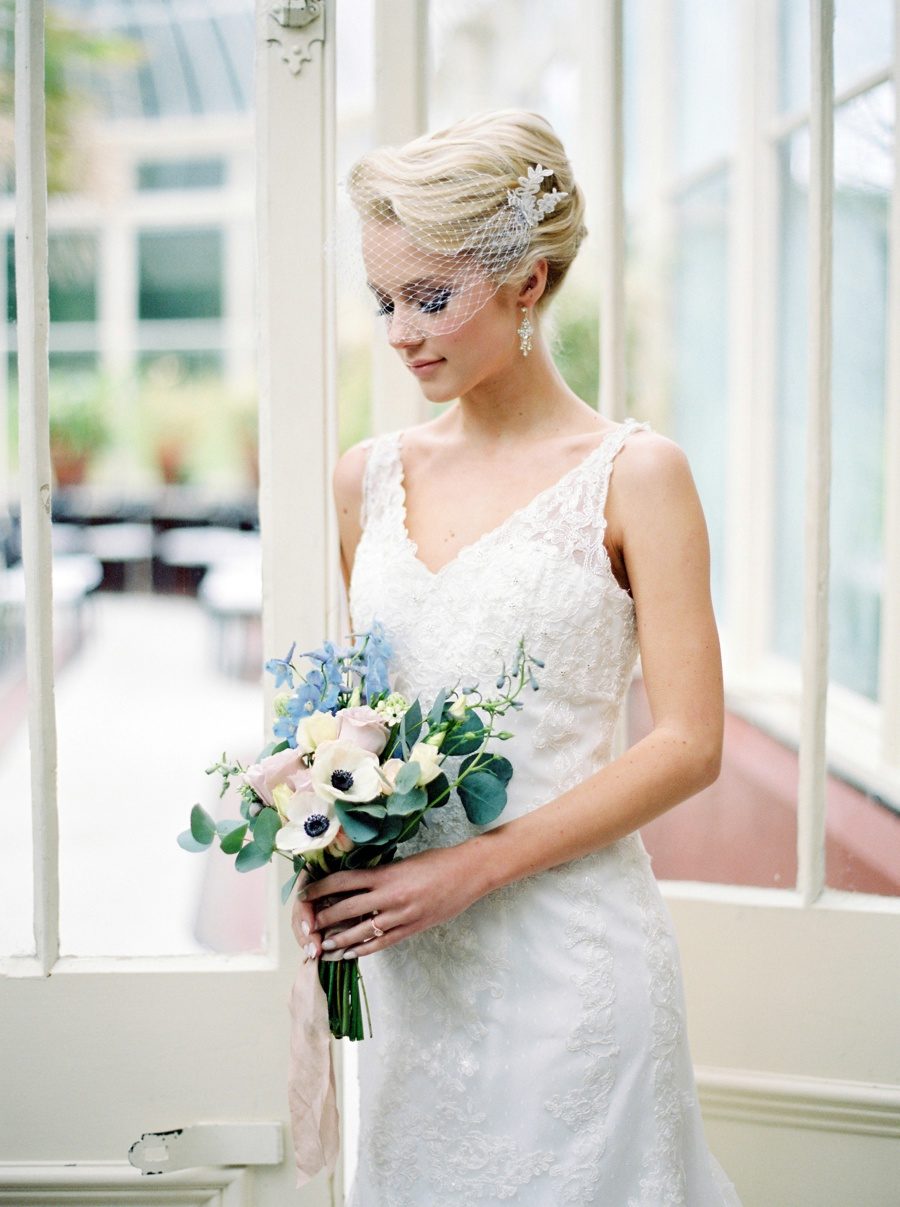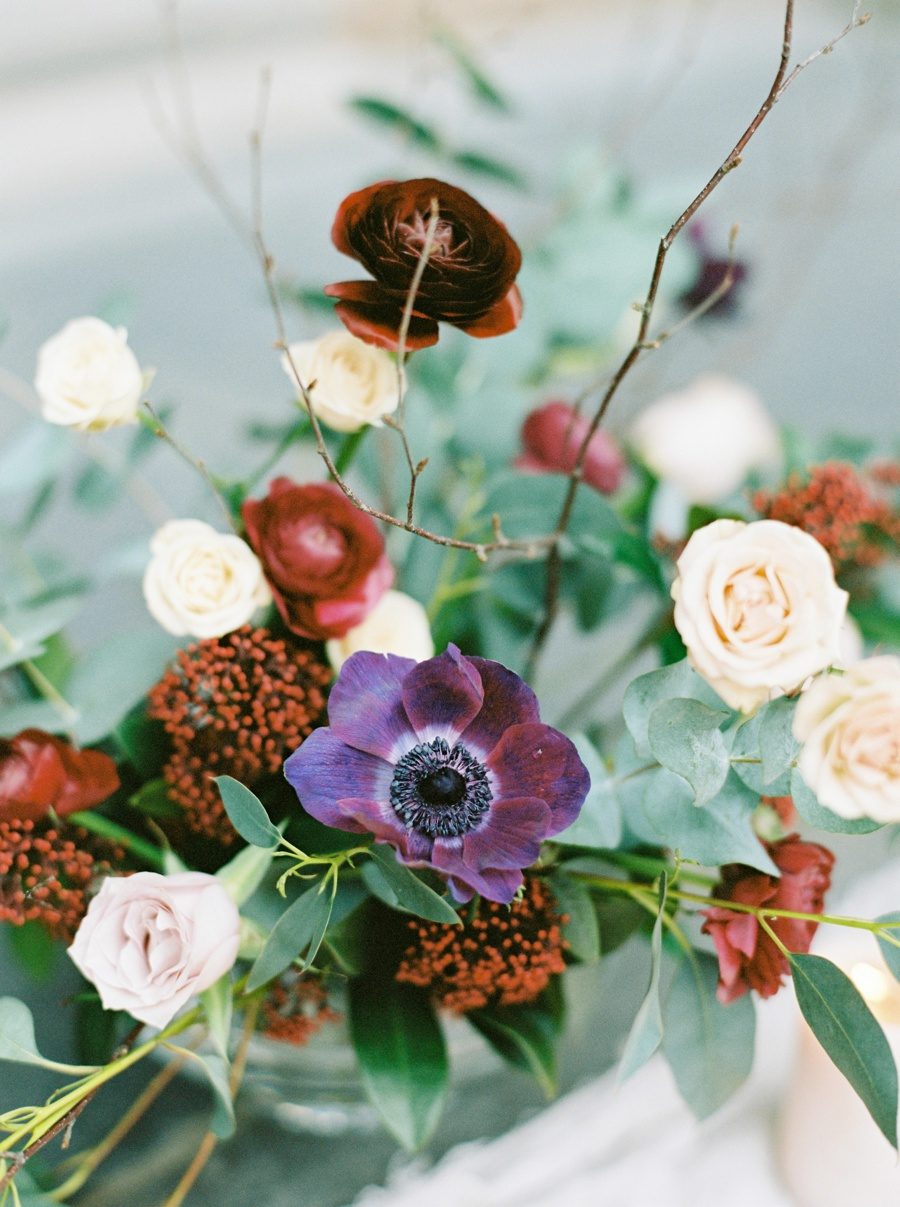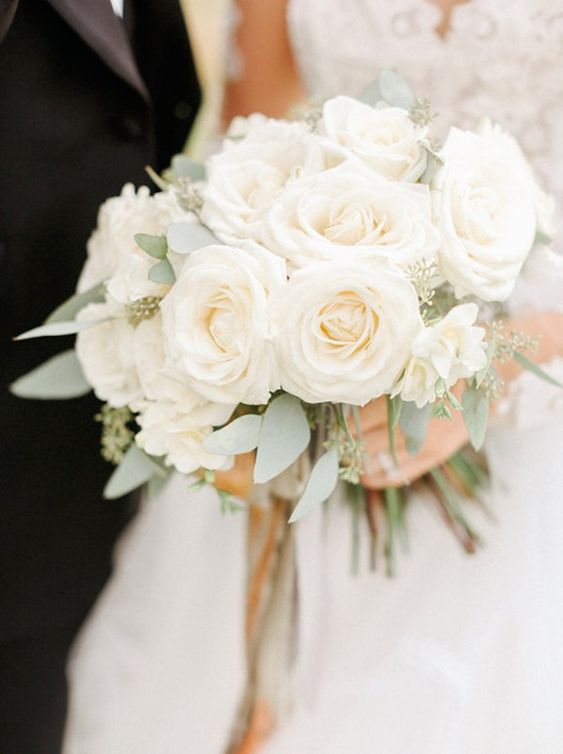Winter Wedding Flowers
From buttonholes and bouquets to centrepieces and ceremony displays, nothing is more glorious or exciting for us than helping a couple's dreams come to life on their big day. But knowing what your floral design dreams are and especially, which flowers are available to you can be confusing when you first meet with a wedding florist for that initial consultation.
One question we get asked is, “which flowers are in season”?
We want to ensure that every detail is taken care of so you can relax and enjoy every moment of your wedding, so we meet with all of our clients to discuss the types of flowers and colours they would like to use and gain a sense of the overall theme and design for their wedding. From there we can advise as to which flowers will be in season and most suitable based on needs and budget. But to get you thinking about what you might like and what could be available to you, today, we’ve put together this post all about in-season Winter wedding flowers as your go-to guide for inspiration.
Amaryllis
A single stem Amaryllis can be expensive and although we may be biased, it is worth paying out for as you don’t need many to make a real impact! Each stem bears three to six very large statement blooms in white, red, yellow, pink, salmon, purple or bi-colours which are show-stopping in any bouquet or as a single stand-alone flower in bud vases. This trumpet-shaped flower gives the appearance of luxury as its petals look velvety and are able to take centre stage as it has no leaves. Symbolising pride and enchanting beauty, and marking friendship and affection, this lovely selection available in Winter, would be perfect for any wedding.
Anemone
The Anemone flower (meaning “daughter of the wind” in Greek) certainly stands out in any bouquet or centrepiece, with its delicate cup-shaped petals and striking black centre. It is also ideal as a single buttonhole/boutonniere and in hair crowns. Available in white, blue and a spectrum of shades of red, pink and purple, each colour has its own meaning and symbolism, bringing with it a tall, wiry stem with medium to dark green foliage. Anemones aren’t scented but that can be overlooked as their appearance more than makes up for it.
Camelia
Exquisite blooms which make for a dramatic display. Fluted, ruffled petals come in either single or double blooms which resemble that of a Rose. Even the glossy, green leaves are appealing. The Camelia flower’s message is one of love and positive thoughts - a perfect start for any marriage!
Carnation
Did you know that there are over thirty species of Carnation? A low-cost bloom which comes in white and an array of hues of orange, pink, purple, red and yellow as well as bi-colours, makes it a desirable choice for not only Winter weddings but for all seasons. White represents pure love and good luck, light red - admiration and dark red - deep love and affection. This romantic flower has a spicy clove-like fragrance and adds texture to bouquets, table centrepieces and other floral arrangements. Adding Spray Carnations amongst Standard Carnations adds volume to any floral design. They are long-lasting and can also be used in bouquets, for buttonholes, pomanders for flower girls, floral backdrops and to decorate pew ends.
Chrystanthemum
Available in a variety of shapes and sizes, this flower differs between the species. The flower heads can be ball or globed shape, daisy-like shape, decorative pompom or button shaped. Colours range from shades of red, pink, yellow, white and purple with some blooms displaying multiple colours. This is an excellent choice for a wedding flower as it symbolises optimism and joy with the red Chrystanthemum representing pure love.
Narcissus (Common name: Daffodil)
Daffodils are usually associated as being the first sign of Spring but they do bloom in February in warmer climates and in the UK when we have had a mild Winter. Symbolising friendship and new beginnings, Daffodils produce trumpet-shaped flowers on a slender stalk and their colours are truly uplifting. The traditional colour is a golden sunshine yellow but they range from yellow and white, yellow and orange, white and orange, salmon hues, pink and lime green. They are ideal for bouquets, buttonholes and centrepieces.
Freesia
Symbolising innocence and friendship, these delicate flowers are a favourite of many people. Each wiry stem produces 5-10 tubular flowers. White Freesias are considered the most fragrant, having a scent so radiantly sweet with a hint of citrus, but the flower can be found in variations of yellow, orange, red, purple, mauve and pink, as well as striped varieties of each colour.
Gerbera
Symbolising happiness, these blooms resemble large Daisies which is why this flower is also known as the African Daisy. A versatile bloom, ideal for bouquets, buttonholes/boutonnieres, centrepieces, they come in red, orange, yellow, pink, white and cream colours. They come in a variety of shapes but there are four main groups - single flowers with a row of non-overlapping petals and a green centre; double with a double row of overlapping petals with a green, black or dark red eye; crested doubles with two rows of overlapping petals with one or more inner rows of shorter petals with a green, black or dark red eye; and full crested doubles which have solid overlapping rows of petals with an inner row reducing in size which covers the eye completely.
Hyacinth
A highly fragrant, waxy bell-shaped flower with reflexed petals. It has lots of small blooms which grow close together in dense clusters around one thick stem. The long, narrow, glossy leaves are folded lengthwise. Hyacinths come in shades of white, peach, orange, salmon, yellow, pink, red, purple, lavender and blue, and represent constancy with blue Hyacinths expressing sincerity.
Hydrangea
Lacy, star shaped flowers, packed closely together in pompom shape on wooden stems, providing mass and volume from just a few stems, making them perfect in bouquets or centrepieces.
Iris
Iris comes from the Greek word meaning rainbow. In the language of flowers it symbolises eloquence. Each Iris has six attractive, colourful lobes - the three inner lobes are petals and the three outer lobes are sepals. The flowers come in all colours of the spectrum apart from red. Based on their colour, Iris’ convey different messages - purple symbolises wisdom and compliments; blue - faith and hope; yellow - passion; and white - purity. Ideal for bouquets, buttonholes/boutonnieres and pops of colours in other floral arrangements.
Jasmine
Strong and sweetly scented (with the fragrance released at night), these tubular, waxy white flowers each come with between four and nine petals (four ovules and two locules). Jasmine flowers are usually gathered in clusters with a minimum of three blooms and oval, shiny leaves. Symbolising deep affection, happiness and elegance - a special selection for any wedding don’t you think? When used in religious ceremonies Jasmine also represents purity.
Lilac
Despite the name, Lilac comes in a variety of shades of pink, purple, blue and white. Pink is a symbol of friendship and love; purple - first love emotions and protection; blue - a happy life and calmness and white - purity and innocence. Loved for its beauty, elegance and aromatic fragrance, the Lilac flower is also a symbol of confidence. The scent varies from light floral to warm spicy tones. Each individual flower is pristine but they grow in clusters to produce an abundant display of blooms with dark green, heart-shaped leaves.
Lisianthus
Often featured in centrepieces in wedding arrangements as well as in bridal bouquets, corsages, buttonholes and boutonnieres, Lisianthus symbolises respect, love, acceptance, appreciation and acknowledgement. Lisianthus flowers are attractive in bud as well as in full bloom when their petals form a trumpet or funnel-shaped corolla. One Lisianthus stem may have several blooms along with dark green, oval-shaped leaves so you may not need many to bulk out the bouquet or display.
Phlox
Phlox is a Greek word meaning “flame'.’ These tall, star-shaped, colourful flowers are eye catching perennials. They typically have five petals and long, narrow leaves. Most common are white, pink, mauve, lavender, blue, orange, red, purple but you can also get two-tone Phloxes.
Rose
What can I say about the beautiful, classic and timeless Rose that you don’t already know? It is always a popular choice for weddings. and the good news is that it is available all year round. Of course, there are now a lot more varieties of Rose to choose from with varying shapes, sizes and colours. Starting off from the romance of Valentines Day through to the actual wedding, Roses all have that special meaning. Red roses represent love and respect; white - true love, purity, dignity, chastity; pink - happiness, gratitude and virtue. You can read more about the most popular Roses in this post.
Ranunculus
Although this is a budget-friendly choice, these 3D-effect flowers most definitely do not look cheap. They are at their peak from January to May. Symbolising charm, these cup-shaped blooms are mildly scented and come in beautiful pure shapes with layers of paper-thin, silky, delicate petals which surrounds a button centre. Their stems are thin and long and commonly feature several blossoms per stem. Available in a large spectrum of colours, these blooms are a great choice for bud vases, buttonholes and bouquets but are usually used as an accent.
Snowdrop
These pretty, white, tiny bell-shaped blooms are one of the first flowers to appear in the new year. A posy or floral display of Snowdrops symbolises optimism and hope.
Tulip
Bringing a rich, rainbow of vibrant colours and textures to any bouquet or arrangement, the petals of Tulips can be smooth, fringed or ruffled. Part of the Lily family, the flowers are cup-shaped and have 6 tepals which comprise of 3 petals and 3 sepals. Again, a very apt choice for a wedding not just because of its colour and appearance but due to the fact that Tulips symbolise imagination, dreaminess, a perfect lover and a declaration of love. White Tulips in particular represent purity, honour and holiness. Superstition says those who dream about white Tulips are about to experience a fresh start or new beginning in life.
We adore working with different ingredients in all of our work to create unforgettable memories and complement the celebratory atmosphere of your special occasion. Following our initial consultation, all of our clients also receive a complimentary trip with us to the London flower market to look at flowers, colours and textures and to help you explore every possibility. Whether you want the in-season flowers as featured above, the hottest trend right now, something meaningful to you, have already gathered inspiration or want to start from scratch, this is such a lovely opportunity for us to solidify your combinations and finalise the details of your perfect arrangement(s).
“Many people think that seasonality is the main factor when it comes to cost of wedding flowers. The cost and availability of each stem does vary according to the time of year. For example, Lilacs in August will cost more than Lilacs in May, red Roses will cost more around Valentine’s Day and it’s very hard to find Peonies in Winter. But while season does mean that certain flowers will be at their best, will be more readily available and therefore cheaper, actually, the main driving force is usually the ratio of blooms to foliage and the overall size of arrangements. The larger the display, the more stems that are required”. (Continue reading)
—
If you would like to find out more about how we can help you to create your dream wedding, event or photoshoot through floral design, then why not get in touch today? You can also click here to learn more about our process or follow us on Instagram / Pinterest for more ideas and inspiration.

























































